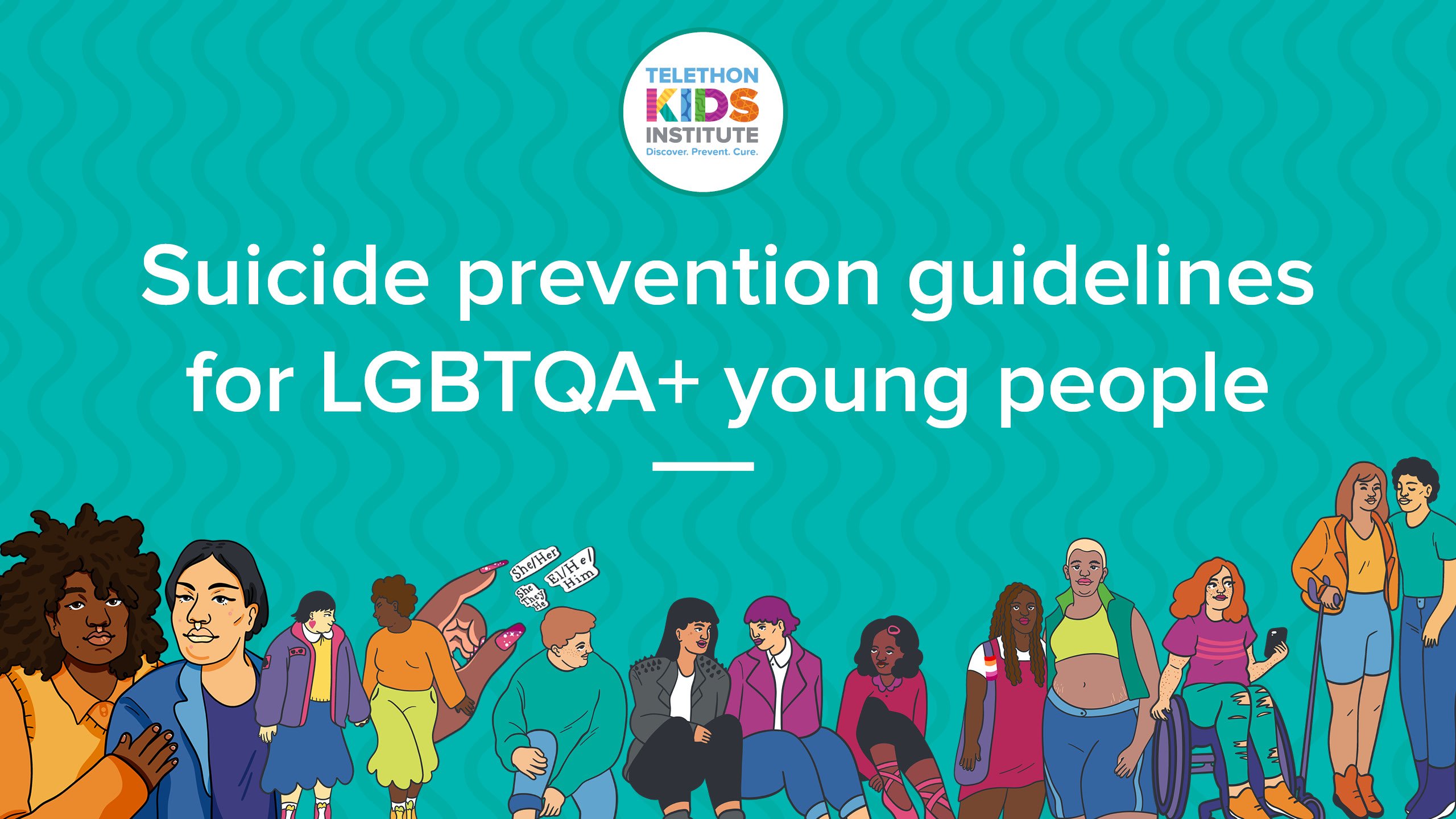
Researchers led by The Kids Research Institute Australia have developed Australia’s first comprehensive guidelines for clinical and community services supporting LGBTQA+ youth who may be at risk of suicide.
The guidelines are aimed at health professionals, community service providers and any organisations that are in regular contact with young people, including teachers and police. The comprehensive guidelines were developed with input from clinical and community service professionals as well as young LGBTQA+ people with lived experience of suicidal thoughts or behaviour.
They were also developed with significant input from researchers at Orygen, The University of Western Australia and WA’s Child and Adolescent Health Service.
Co-Head of Youth Mental Health research at The Kids Research Institute Australia and senior researcher on the guidelines, Dr Yael Perry, said it is vital that services create an environment where all young people feel comfortable asking for help.
“While many LGBTQA+ young people have happy and fulfilled lives, we know that overall, LGBTQA+ young people experience elevated rates of mental health difficulties and greater incidence of suicidal thoughts and behaviour than their peers,” she said.
What we want to do is help service providers in clinical and community settings to be well-equipped to support these young people so that they’re getting informed, safe and appropriate care.
The guidelines are made up of 290 clear recommendations, covering areas including general principles for inclusive practice, assessing and supporting young people who are experiencing suicidal thoughts, and advocacy.
Lead researcher, Dr Penelope Strauss, said many of the recommendations are simple, such as making changes to paperwork allowing young people to choose how their gender is described, when and how to ask questions about someone’s sexuality or gender, or providing access to gender-neutral bathrooms.
“I think there are a lot of service providers who want to do better in this area,” she said. “Most people coming through their training as a GP or psychologist or a youth worker don’t get very much exposure to training around LGBTQA+ identities or health, so they are often very poorly equipped to support this population.
“Around ten per cent of young people identify as LGBTQA+, so for anyone who works with young people, this knowledge is vital.”
The guidelines also provide recommendations and considerations for specific groups of LGBTQA+ young people with intersecting identities. Dr Perry said input from the young people who helped develop the guidelines suggested there was a desire for more concrete engagement from service providers.
“Young people were keen to make sure that the services weren’t just being tokenistic in their support of LGBTQA+ youth,” she said. “So, having a rainbow flag or a pride flag at the front of your service doesn’t mean much unless it’s backed by genuine understanding of LGBTQA+ experiences and meaningful engagement with the population.
There are some really basic practices that a lot of people just don’t know about and would make a really big difference to LGBTQA+ young people’s experiences of care, so we’re hoping that that these will be used by clinical services, but also trickle out into other parts of the community.
The guidelines will be made available to service providers across Australia and supported by workshops.
You can read the full guidelines here.
KEY FACTS:
- More than a quarter (25.6%) of LGBTQA+ young people (aged 16 and 17) have attempted suicide in their lifetime, almost five times the rate reported in the general population (5.3%)
- Clinical and community-based professionals often receive inadequate training in LGBTQA+ identities, and the unique needs of this population.
- The guidelines include 290 actionable recommendations for service providers across four key areas: General principles for inclusive practice; Assessment of suicide risk; Considerations for specific populations; Advocacy
- The guidelines were developed based of evidence-based recommendations, as well as detailed consultation with clinicians, researchers, stakeholders and young LGBTQA+ people with a lived experience of suicidal thoughts
